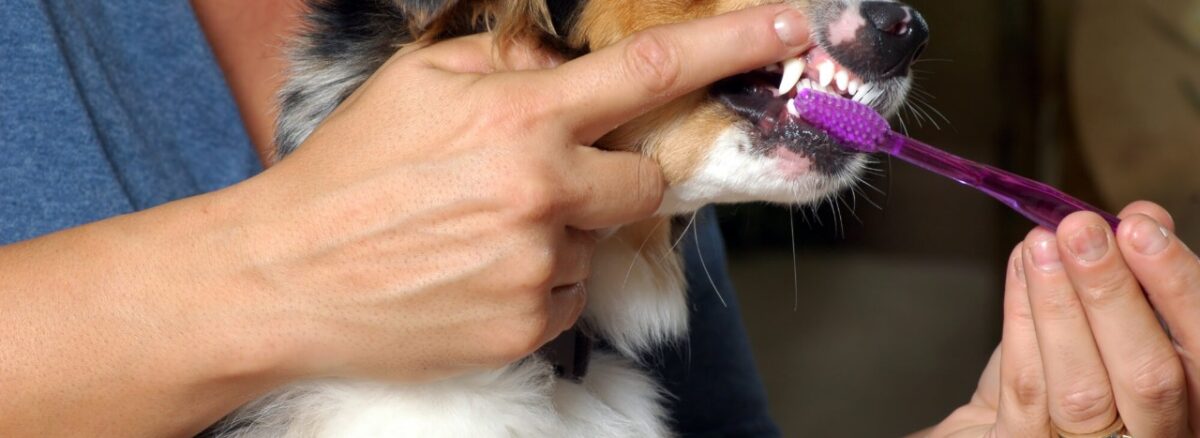As loving pet parents, we often focus on feeding our pets well, taking them on walks, and keeping their vaccinations up to date. However, one crucial area that often gets overlooked is dental health. Just like humans, dogs and cats can develop dental problems if their teeth and gums are not properly cared for. Poor dental hygiene can lead to serious health issues such as tooth loss, infections, and even heart or kidney disease.
A professional dental cleaning by a veterinarian can prevent these complications, but how do you know when it’s time to schedule one? Here are the top 5 signs your pet needs a dental cleaning—if you notice any of these, it’s time to visit your vet.
-
1. Bad Breath (Halitosis)
One of the first and most obvious signs of dental trouble in pets is bad breath. While it’s normal for pets to have some odor in their mouths, persistent or foul-smelling breath often indicates bacterial buildup in the mouth due to plaque and tartar.
- Cause: Plaque is a sticky film of bacteria that forms on teeth. Over time, it hardens into tartar, which irritates the gums and leads to infection.
- Why It Matters: If ignored, it can lead to periodontal disease—a painful condition that damages the structures supporting the teeth.
If your pet’s breath is consistently unpleasant, it’s not just an annoyance—it’s a warning sign that a dental cleaning is needed.
-
2. Visible Tartar and Discoloured Teeth
Another clear indicator that your pet needs a dental cleaning is the presence of yellow or brown tartar on the teeth, especially near the gumline. Healthy teeth should be white and relatively free of buildup.
- Where to Look: Check your pet’s molars and premolars by gently lifting the lips. These areas tend to accumulate the most tartar.
- What It Means: Tartar can trap bacteria under the gumline, leading to inflammation and infection. If left untreated, it can damage the gums and cause teeth to loosen or fall out.
A professional cleaning can remove tartar buildup and help restore your pet’s dental health.
-
3. Red, Swollen, or Bleeding Gums
Gingivitis, or gum inflammation, is a common early sign of dental disease in pets. If you notice red or swollen gums, or if your pet’s gums bleed easily during chewing or brushing, this is a major red flag.
- Healthy Gums: Should be firm and pink (or pigmented depending on breed) without bleeding.
- Unhealthy Gums: Red, puffy, and prone to bleeding. Often accompanied by drooling or pawing at the mouth.
Inflamed gums are not only painful for your pet but can also indicate the progression of periodontal disease. Professional cleaning, combined with at-home dental care, can reverse early gum disease.
-
4. Difficulty Eating or Dropping Food
If your pet has suddenly become picky with food, chews only on one side, or drops food from their mouth, they might be in dental pain.
- Watch for: Whimpering while eating, reluctance to chew hard food, or changes in eating habits.
- Why It Happens: Painful teeth or gums make it hard for pets to chew, especially if there are loose or decayed teeth.
A dental exam can determine if there are any broken or infected teeth that require treatment. Removing the source of discomfort through cleaning and dental work can restore normal eating behavior.
-
5. Excessive Drooling or Pawing at the Mouth
While some breeds naturally drool more than others, a sudden increase in drooling—especially if it’s accompanied by signs of discomfort—is a sign something’s wrong in your pet’s mouth.
- Symptoms: Stringy drool, blood-tinged saliva, or pawing/rubbing the face.
- Possible Causes: Mouth ulcers, infected teeth, or abscesses can all lead to increased salivation and discomfort.
If your pet is constantly rubbing their face, it may be their way of trying to relieve pain or irritation caused by dental disease. Veterinary dental care can help alleviate this discomfort and address the root cause.
-
Bonus Sign: Change in Behavior or Mood
Pets often hide pain instinctively, but dental issues can still affect their mood, energy, and behavior. If your usually energetic pet seems lethargic, irritable, or withdrawn, dental pain might be the culprit.
- Behavioral Signs: Growling when touched near the mouth, avoiding play, or acting out of character.
- Reason: Constant mouth pain can lead to stress, fatigue, and a decline in quality of life.
Once dental issues are resolved, many pet owners are surprised at how quickly their pet’s behavior improves—often becoming more playful and affectionate again.
-
Final Thoughts: Prevention is Better Than Cure
Dental problems in pets are incredibly common, but thankfully, they are also preventable. Here’s how you can help keep your pet’s teeth healthy:
- Annual dental check-ups with your vet
- Daily or weekly brushing using pet-safe toothpaste
- Dental chews and toys designed to reduce plaque
- A balanced diet that supports oral health
If your pet is showing any of the five signs mentioned above, don’t wait. Schedule a dental exam and cleaning with your veterinarian. A clean mouth means a healthier, happier, and longer life for your beloved companion.
Your pet can’t tell you when something hurts—but their teeth might be trying to. Be their voice and take action before minor dental issues become major health problems.
Share This Post

